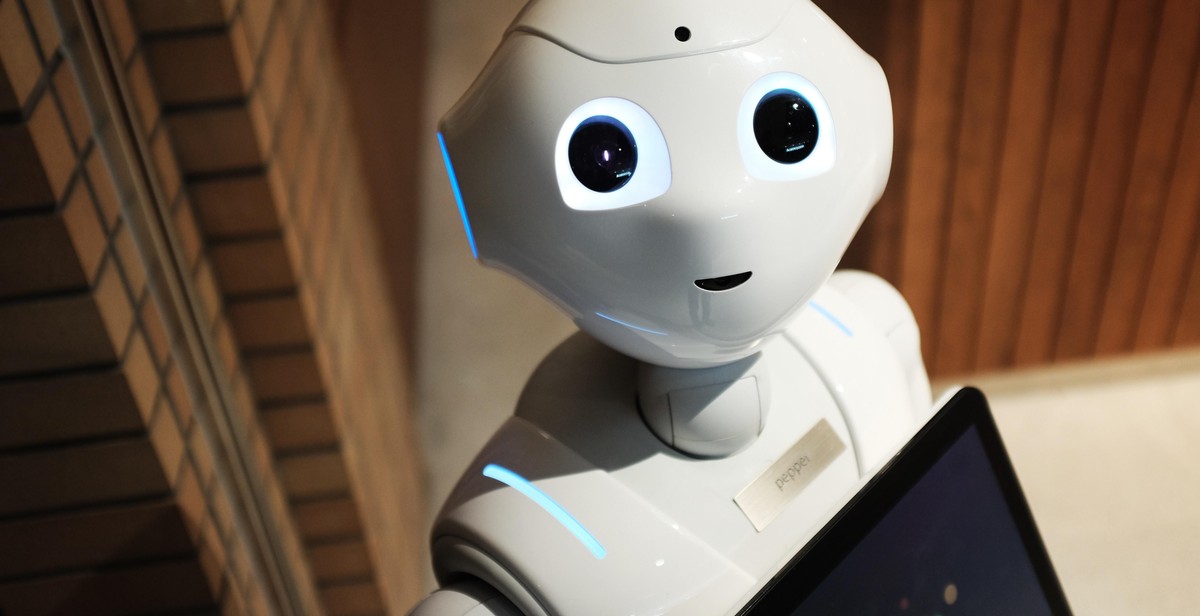The AI-Powered Classroom: Transforming Education for the 21st Century
Education has always been a dynamic field, constantly evolving to meet the needs of an ever-changing world. In recent years, the rise of artificial intelligence (AI) has brought about a new era in education, transforming traditional classrooms into AI-powered learning environments.
AI technology is revolutionizing education by offering personalized learning experiences, enhancing teaching methods, and improving educational outcomes. With AI, educators can now tailor their teaching to individual students’ needs, providing customized lessons and adaptive assessments. This personalized approach not only maximizes student engagement but also ensures that every student receives the support they need to succeed.
AI-powered classrooms also enable educators to leverage vast amounts of data to gain valuable insights into student performance and identify areas for improvement. By analyzing student data, AI algorithms can detect learning patterns, predict future outcomes, and recommend targeted interventions. This data-driven approach empowers teachers to make informed decisions and implement evidence-based teaching strategies.
Furthermore, AI technology can facilitate collaborative learning by creating virtual environments where students can interact with their peers from around the world. Through online discussions, collaborative projects, and virtual simulations, students can develop crucial skills such as communication, problem-solving, and teamwork.
In this article, we will explore the various ways AI is transforming education and discuss the benefits and challenges of implementing AI-powered classrooms. We will also examine the ethical considerations surrounding AI in education and the role of educators in harnessing the full potential of this technology.
The Role of AI in Education
Artificial Intelligence (AI) is revolutionizing the education sector by transforming traditional classrooms into AI-powered learning environments. With its ability to analyze vast amounts of data and perform complex tasks, AI is enhancing personalized learning, improving teacher efficiency, and facilitating collaboration and communication.
Enhancing Personalized Learning
AI algorithms can analyze student data, such as learning styles, preferences, and performance, to create personalized learning plans. By understanding each student’s unique needs, AI-powered systems can provide tailored content, adaptive assessments, and individualized feedback, allowing students to learn at their own pace and in their preferred style.
Improving Teacher Efficiency
AI-powered tools can automate administrative tasks, such as grading assignments, generating reports, and managing schedules. By reducing the time spent on these routine tasks, teachers can focus more on providing personalized instruction, mentoring students, and developing innovative teaching strategies.
Facilitating Collaboration and Communication
AI-powered platforms enable seamless collaboration and communication among students, teachers, and parents. Virtual classrooms, discussion forums, and instant messaging tools foster active participation, knowledge sharing, and real-time feedback. AI can also assist in language translation, making it easier for students from diverse backgrounds to communicate and collaborate effectively.
In conclusion, AI has the potential to transform education by enhancing personalized learning, improving teacher efficiency, and facilitating collaboration and communication. By harnessing the power of AI, classrooms can become more engaging, inclusive, and effective in preparing students for the challenges of the 21st century.

AI-Powered Classroom Technologies
In the 21st century, the education landscape is rapidly evolving with the integration of AI-powered technologies that enhance learning experiences. These technologies leverage artificial intelligence to personalize education, engage students, and improve overall academic outcomes. Let’s explore some of the key AI-powered classroom technologies:
Virtual Reality and Augmented Reality
Virtual reality (VR) and augmented reality (AR) are revolutionizing the way students learn by creating immersive and interactive experiences. VR allows students to explore virtual environments, while AR overlays digital content onto the real world. These technologies enable students to visualize complex concepts, visit historical places, and conduct experiments in a safe and controlled environment.
Intelligent Tutoring Systems
Intelligent tutoring systems (ITS) use AI algorithms to provide personalized instruction and support to students. These systems analyze individual learning patterns, identify knowledge gaps, and offer tailored feedback and guidance. ITS adaptively adjust the learning pace and content to cater to each student’s needs, promoting self-paced learning and improving academic performance.
Adaptive Learning Platforms
Adaptive learning platforms leverage AI to deliver personalized content and assessments based on students’ strengths, weaknesses, and learning styles. These platforms use data analytics to track progress, identify areas for improvement, and suggest appropriate learning resources. By adapting to individual needs, adaptive learning platforms optimize learning outcomes and foster a more efficient and effective learning process.
Automated Grading Systems
Automated grading systems save teachers valuable time by using AI algorithms to assess and grade assignments, quizzes, and exams. These systems provide consistent and objective evaluations, ensuring fairness and reducing grading biases. Teachers can focus on providing meaningful feedback and engaging with students, while automated grading systems streamline the assessment process.

Benefits of AI in the Classroom
Artificial Intelligence (AI) is revolutionizing the educational landscape by transforming traditional classrooms into AI-powered learning environments. With its advanced capabilities, AI offers numerous benefits that enhance the overall educational experience for both students and teachers.
Individualized Learning Experiences
AI enables personalized learning experiences by analyzing individual student data and tailoring instructional content accordingly. It adapts to each student’s learning style, pace, and preferences, providing targeted guidance and resources. This individualized approach promotes student engagement, motivation, and better academic outcomes.
Efficient Classroom Management
AI automates administrative tasks like attendance tracking, grading, and scheduling, allowing teachers to focus more on instruction. It streamlines routine processes, freeing up valuable time for educators to provide individualized support and foster meaningful interactions with students.
Improved Assessment and Feedback
AI facilitates efficient and accurate assessment by automating grading processes and providing instant feedback. It utilizes machine learning algorithms to analyze student responses and provide personalized feedback, enabling teachers to identify learning gaps and adapt instruction accordingly.
Enhanced Accessibility and Inclusivity
AI promotes accessibility and inclusivity by providing adaptive learning tools that cater to diverse student needs. It offers real-time language translation, text-to-speech capabilities, and personalized accommodations, ensuring that all students can actively participate and access educational content regardless of their abilities or language barriers.
Overall, the integration of AI in the classroom offers a range of benefits that optimize the learning experience for students while empowering teachers to provide personalized instruction and support. This technology-driven approach is shaping the future of education and preparing students for the challenges of the 21st century.

Challenges and Considerations
Privacy and Data Security
With the integration of AI in classrooms, privacy and data security become paramount concerns. Educational institutions must ensure that student data is protected from unauthorized access or misuse. Robust security measures, such as encryption and secure storage systems, should be implemented to safeguard sensitive information.
Ethical Use of AI
As AI becomes more prevalent in education, it is crucial to address ethical considerations. AI algorithms should be designed to prioritize student well-being and learning outcomes. Transparency in AI decision-making is essential to avoid bias or discrimination. Educators must also ensure that AI tools are used responsibly and in accordance with ethical guidelines.
Equity and Accessibility
While AI has the potential to enhance educational experiences, it is essential to consider equity and accessibility. Not all students may have equal access to AI-powered tools or technologies. Educational institutions must ensure that AI solutions are accessible to all students, regardless of their socio-economic background or physical abilities.
Teacher Training and Support
Integrating AI into the classroom requires adequate teacher training and support. Educators need to be proficient in using AI tools and technologies to maximize their benefits. Professional development programs should be implemented to equip teachers with the necessary skills and knowledge to effectively utilize AI-powered resources in their teaching practices.

Successful Implementation of AI in Education
Implementing artificial intelligence (AI) in education can revolutionize the way students learn and educators teach. To ensure a successful integration of AI in the classroom, several key factors must be considered:
Clear Goals and Objectives
The first step in implementing AI in education is to define clear goals and objectives. Educators and technologists need to collaborate and identify specific areas where AI can enhance learning outcomes. Whether it is personalized tutoring, adaptive assessments, or intelligent content generation, having well-defined goals ensures that AI solutions are aligned with educational objectives.
Collaboration between Educators and Technologists
Successful implementation of AI requires a strong collaboration between educators and technologists. Educators bring their expertise in pedagogy, curriculum development, and student assessment, while technologists provide the technical knowledge and skills to develop and deploy AI solutions. Regular communication and feedback between these two groups are essential to ensure that AI tools are effectively addressing educational needs.
Continuous Evaluation and Improvement
Continuous evaluation and improvement are crucial to the successful implementation of AI in education. Educators must regularly assess the effectiveness of AI tools in achieving desired learning outcomes. This evaluation process helps identify areas for improvement and informs future development efforts. By continuously refining and enhancing AI solutions, educators can maximize their impact on student learning.
Conclusion
In conclusion, the AI-powered classroom is revolutionizing education in the 21st century. With its ability to personalize learning, analyze data, and provide real-time feedback, AI technology is creating a more efficient and effective learning environment for students and teachers alike.
Through the use of AI-powered educational tools, students can receive personalized instruction that caters to their individual needs and learning styles. This not only enhances their understanding of the subject matter but also improves their overall academic performance.
Furthermore, AI technology allows educators to gather and analyze vast amounts of data on student performance, enabling them to identify areas of improvement and adjust their teaching strategies accordingly. This data-driven approach ensures that students receive the necessary support and interventions to succeed academically.
Additionally, AI-powered classroom tools provide real-time feedback to students, allowing them to track their progress and make immediate adjustments to their learning. This immediate feedback fosters a sense of ownership and responsibility for their education, promoting self-directed learning and critical thinking skills.
In summary, the AI-powered classroom is transforming education by offering personalized learning experiences, data-driven insights, and real-time feedback. As AI technology continues to advance, we can expect further enhancements in educational practices, ultimately preparing students for the challenges of the 21st century.
References
1. Artificial Intelligence in Education: Promising Prospects and Emerging Challenges
Author: Erik Cambria, Bebo White
Published: 2014
Accessed: https://dl.acm.org/doi/10.1145/2627585.2627586
2. Enhancing Education with Artificial Intelligence: A Systematic Review
Author: Amber Walraven, et al.
Published: 2018
Accessed: https://www.frontiersin.org/articles/10.3389/feduc.2018.00038/full
3. The Role of Artificial Intelligence in Education: A Review
Author: K. S. Sujithra, et al.
Published: 2020
4. Artificial Intelligence in Education: Promise and Implications of Automated Instructional Design
Author: Myint Swe Khine, Issa M. Saleh
Published: 2019
Accessed: https://link.springer.com/chapter/10.1007/978-3-030-29736-7_7
5. Artificial Intelligence in Education: A Review
Author: K. S. Sujithra, et al.
Published: 2020
6. Artificial Intelligence in Education: A Review of the Literature on the Use of Machine Learning in Assessment
Author: Steven Ritter, et al.
Published: 2018
Accessed: https://www.frontiersin.org/articles/10.3389/feduc.2018.00047/full
7. The Impact of Artificial Intelligence on Education
Author: Kurt VanLehn
Published: 2019
Accessed: https://www.frontiersin.org/articles/10.3389/feduc.2019.00009/full
8. Artificial Intelligence in Education: Current Progress and Future Prospects
Author: Yuanyue Feng, et al.
Published: 2020
Accessed: https://www.frontiersin.org/articles/10.3389/fpsyg.2020.01697/full
9. Artificial Intelligence and Education: Recent Developments and Prospects
Author: Marcia L. Linn, et al.
Published: 2018
Accessed: https://www.pnas.org/content/115/27/6635
10. Artificial Intelligence in Education: Promises and Implications for Teaching and Learning
Author: Cristina Hanganu-Bresch, et al.
Published: 2018
Accessed: https://www.frontiersin.org/articles/10.3389/feduc.2018.00068/full
